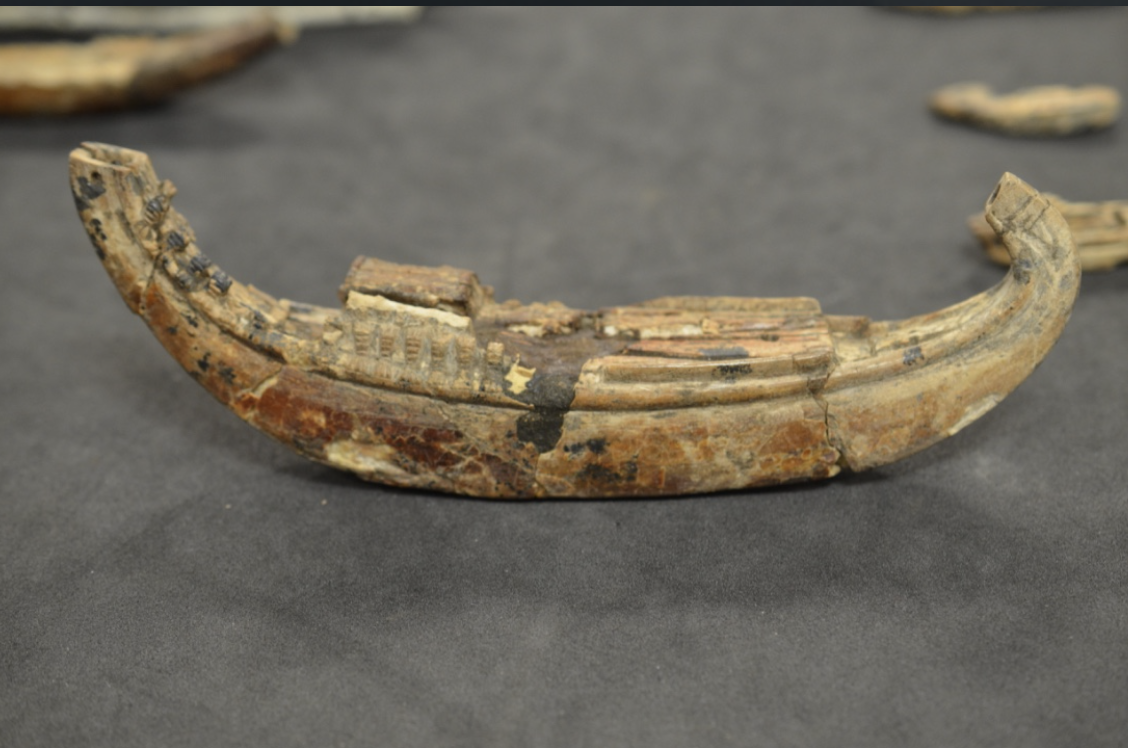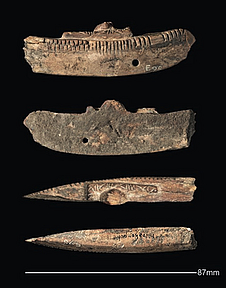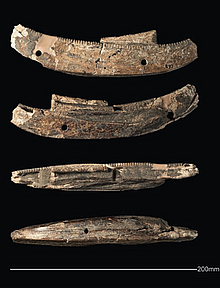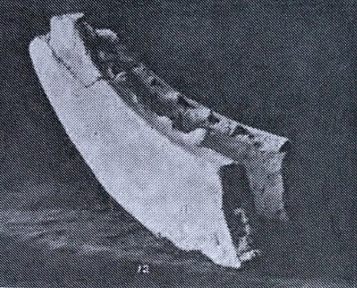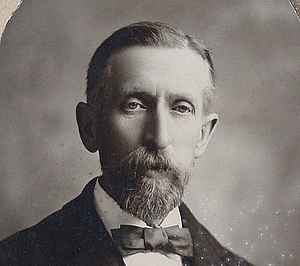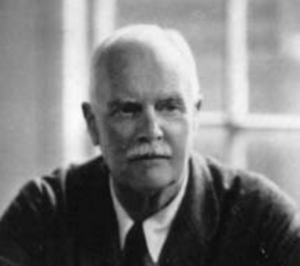Model – boat MOD-0026
By Vanhulle, Dorian
, Nekhen town, Temple, 'Main Deposit'.
1898–1899 : Egypt Exploration Fund excavation.Oxford, Ashmolean Museum, University of Oxford, AN 1896–1908 E.86.
Date : Naqada III
This model comes from the 'Main Deposit' at Hierakonpolis, which notably contained Early Dynastic material such as the Narmer Palette, the Narmer Mace-head and the Scorpion Mace-head (Dynasties "0" and 1). The archaic levels in the Temple of Hierakonpolis are extremely difficult to date with precision since the deposits have been used during an extensive period of time and mix materials from different periods. Because of its complexity and its ressemblance with Old Kingdom royal boats, it seems reasonable to suggest that this model was produced between the 1st dynasty and the beginning of the Old Kingdom.
Material : Ivory (undefined) (Carved)
Preservation : Almost complete
Preservation information :
The model lost the finials of its extremities and is slightly damaged at various places. The stern broke and was repaired at a unknown date after the discovery of the model.
Description
This highly detailed boat model counts among the most impressive ones urrently known. The prow is raised verticaly and the stern is incurved. On each side of the deck, a modelled bundle that goes from the top of the prow to the top of the stern forms the gunwale. It most probably reproduces the vegetal bundle fixed to the hull so to create a gunwale. Although this is not the case here, almost all ivory models from the Main Deposit have small vertical incisions regularly spaced at the location of the gunwales. They probably designate the ropes that solidly tied the vegetal bundle to the planking. On most of these ivory models, cross-shaped incisions are visible on the extremities and on structures such as the cabin or the ceremonial seat. Such details can also be seen in Early dynastic official art such as the Narmer Palette and on the Plover Palette (Asselbergh 1961: 336–337, pl. 90.159).
Two "guard rails" flank each side of the central section of the deck, which is slightly higher than the fore and aft part of the deck. A circular hole has been drilled at the extremity of this central platform, near the stern. Its purpose could have been to support a pole (actual mast did not appear before the Pharaonic period). Immediately before the stern are four smaller perforations arranged in a square, perhaps for the building of a canopy similar to the one visible on the actual boat of Khufu in Giza. Between this canopy and the deck lies a shallow rectangular hollowing. The cabin is quite damaged but an off-centre door can still be observed. Another interesting features are the nodes sculpted along the gunwale up to the top of the bow. No such nodes can be observed after the cabin nor before the girders. They are thus absent on one half of the model. Similar nodes can be observed in Early Dynastic sculpture, for example on a 1st Dynasty breccia basket from Abydos (ÄMP 17968; Grimm & Schoske 2000: 68, no. 144).
This model shows many realistic details. This strongly suggests that such a boat actually existed and that the craftman that manufactured the model was familiar with it. One cannot help but notice the typological relation between this model and the cedar boat of Khufu. Indeed, girders can be seen at exactly the same emplacement on Khufu’s boat. Towards the prow, this line of girders stops just before a small canopy supported by thin pillars. Between the gunwales and the girders, there is no decking and the thwarts (or deck beams) are apparent. A gangplank allowed passengers to cross this shallow space and to reach the deck. The cabin on Khufu's boat has two off-centre doors, one on each side. The front side of the model’s cabin is almost completely damaged so it is impossible to ascertain the existence of a second door. Last but not least, the prow and stern of the boat are separated pieces fixed to the main structure, exactly like the now lost prow and stern of the model. On Khufu’s boat, the rows are attached to the girders thanks to large rope knots. At first sight, it would be tempting to correlate these knots with those sculpted on the model. This interpretation could be supported by the fact that the rows are limited to the front half on both boats. However, the knots on the model continue up to the summit of the prow. This makes this hypothesis less likely to be correct, since rows cannot be found at this location. Another possibility would be that these knots reflect the complex ligatures that tied the girders directly to the thwarts. But, again, this is seriously challenged by the fact that, on the model, these girders stop where the knots begin. This feature, which can after all be something very different than mere knots, can also be related to the adornments that decorate the inner side of the prow on sacred boats such as the solar and Ḥnw barques. Such adornments also appear in Naqadan iconography, particularly on the "frond boats" well attested in rock art.
Decoration
Both of these extremities are drilled at their summit, most probably for the fixation of a decorative final. The perforation is longitudinal at the stern and axial at the bow. The small transverse hole at the top of the bow probably held a small peg.
Dimensions (cm)
4.8
4.8
22
Additional information
Acknowledgements
We thank Liam McNamara for facilitating the study of this artefact.
References
1970
Ships of the pharaohs: 4000 years of Egyptian shipbuilding. Architectura Navalis. London
, 23, fig. 69.2010
Die Provinztempel Ägyptens von der 0. bis zur 11. Dynastie: Archäologie und Geschichte einer Gesellschaftlichen Institution zwischen Residenz und Provinz. Teil 1: Text. Probleme der Ägyptologie 30. Leiden & Boston
, Fig. 5.52.2011
Egyptian watercraft models from the Predynastic to Third Intermediate Periods. BAR International Series 2263. Oxford
, 155, no. 50.2018
Preliminary observations on some Naqadian boat models: a glimpse of a discrete ideological process in pre-pharaonic arts. In Kabaciński, Jacek, Marek Chłodnicki, Michał Kobusiewicz, and Małgorzata Winiarska-Kabacińska (eds), Desert and the Nile: prehistory of the Nile Basin and the Sahara. Papers in honour of Fred Wendorf. Poznań: Poznań Archaeological Museum
, 301-304, fig. 10, 11, 12.